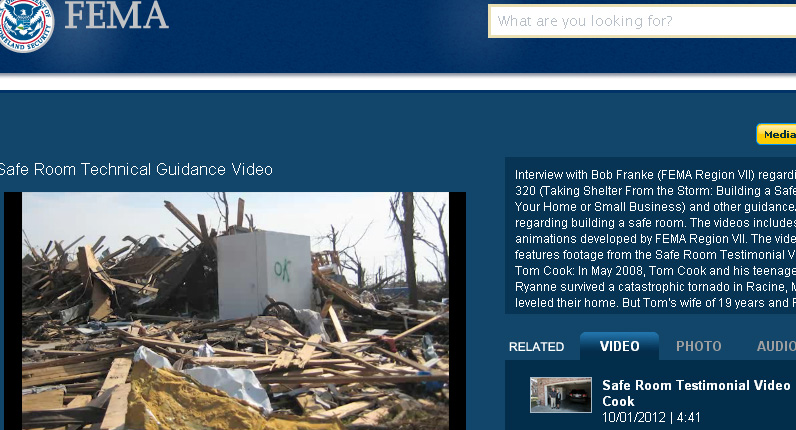 Following Monday’s deadly tornado in Moore, Oklahoma that resulted in substantial damage to houses, schools, and several fatalities, conversations have been springing up left and right about safe rooms, shelters, and other means of providing safe areas to those in localities prone to tornado activity.
Following Monday’s deadly tornado in Moore, Oklahoma that resulted in substantial damage to houses, schools, and several fatalities, conversations have been springing up left and right about safe rooms, shelters, and other means of providing safe areas to those in localities prone to tornado activity.
Mike Hancock, president of Basement Contractors in Edmond, Oklahoma suggests that basements are a viable means of shelter during an extreme wind event. In speaking to CNN, he pointed out that “probably less than one tenth of one percent” of the houses in Moore are built with basements. Several reasons have been given for this, such as, the high water tables, underground rock, heavy clay, plastic soils, and complication in constructing basements. Hancock argues that improvements in water proofing methods and his track record, having built more than 600 basements in the Oklahoma City area over the past 15 years, prove many of these claims to be unsubstantiated. But still this option, though doable, depending on where these basements are incorporated, may not be worth the effort.
Ernst Kiesling, a former professor of civil engineering at Texas Tech, cites the difficulty of making basements compliant with the Americans with Disabilities Act and the complication of building below frost lines in certain areas as reasons why basements may not be the best options. Keisling suggested a few alternatives such as steel, concrete and plastic above ground or underground shelters, and even those that fit comfortably underneath the garage slab. Kiesling is among many who view shelters and safe rooms as a practical means of providing safety for the masses.
Related: Could anything have been done?
In one testimony regarding FEMA P-320, Tom Cook, a resident of Joplin, Missouri, who survived a tornado near Joplin in 2008 and Joplin’s 2011 tornado, emphatically supported the installment of safe rooms in existing houses. As he said, “You gotta have a chance, you gotta give yourself a chance, ‘cause you don’t got no chance otherwise… They don’t want the feeling I felt that Saturday in 2008 of having to go look for your family.”
With reading up on what has been said, so far, on creating safe rooms and testimonials from the public, it seems most of the dialogue has been geared towards the idea that safe rooms and shelters are not only viable options for safety during an extreme wind event at high wind speeds, but may be the only practical options, when considering the integrity of houses in such situations. One Andrew Graettinger, a civil engineer at the University of Alabama, explains to NBC News that at high wind speeds, as were experienced in Moore, OK, it is too unrealistic and expensive to build for homes that will be able to sustain such forces. He stated, “Lower wind speeds, you design to protect your house,” giving a few examples of Inexpensive construction techniques such as the use of clips and straps to keep the walls bolted to the roof and the foundation; he continued, “…and higher wind speeds you design to save your life.”
This is definitely an important dialogue that should continue for some time now. Safe rooms and other types of shelter have the potential to save countless lives in the face of devastating tornadoes. But it seems the public, as well as other engineers are posing the very question that we have been working so long and so hard to answer: Can we demonstrate that with some engineering attention, the performance of even traditional building materials and methods can be so improved such that a structure would be able to withstanding a high intensity tornado?









